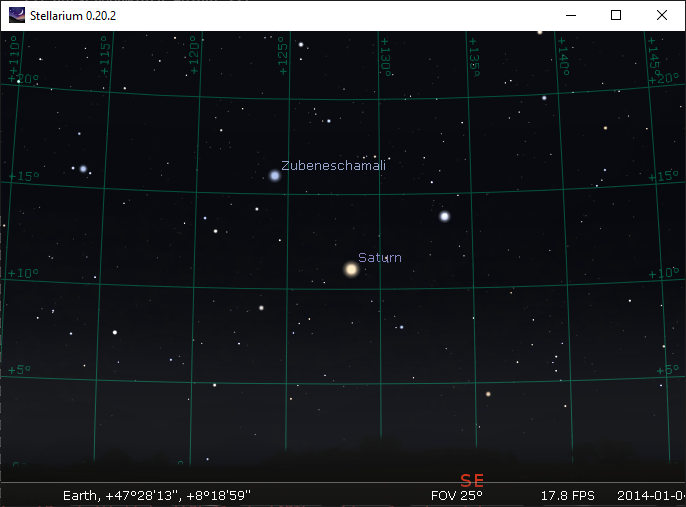Example
// vim: ft=javascript
//
// ..\..\runScript.bat moveToAltAzi.ssc
//
// Go to Irchelturm
core.setObserverLocation(
8 + 36/60 + 25.85/60/60, // longitude
47 + 32/60 + 21.48/60/60, // latitude
0 , // Altitude
0 // Duration
);
core.setDeltaTAlgorithm('WithoutCorrection');
core.setDate(
'2014-01-04T05:15:00',
'local' , // or 'utc'
true // enable Delta T correction
);
// Why is this even necessary?
// 2020-09-23 / Version 0.20 (not necessary anymore?)
// core.wait(0.01);
// Stop time
core.setTimeRate(0.0);
core.moveToAltAzi(
//
// Look at Saturn.
// The planet is
11.1, // Approx 11 degrees above the horizon, and
128.0, // almost in South-East.
0.0 // Don't loose time, move immediatly.
);
StelMovementMgr.zoomTo(25.0);
GridLinesMgr.setFlagAzimuthalGrid(true);
Github repository about-Stellarium, path: /API/core/moveToAltAzi.ssc
